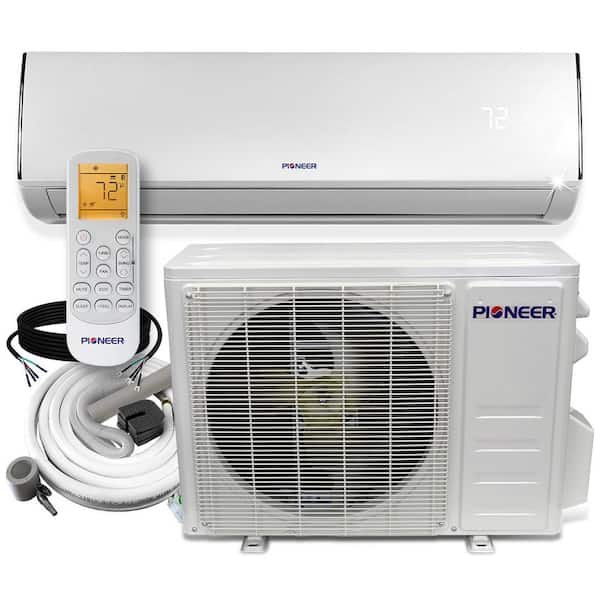Are you tired of sweating through the scorching summer months? Look no further, because we’ve got just what you need – 120v mini split AC units. Whether you live in a small apartment or a large house, these compact and efficient cooling systems are perfect for providing cool air in any space. In this article, we’ll give you all the essential information you need to know about 120v mini split AC units, from how they work to their benefits and installation process. So sit back, relax, and get ready to enjoy a cool and comfortable summer with the help of these incredible cooling devices.
I. Overview of 120v Mini Split AC Units
A. Definition
A 120v mini split AC unit, also known as a ductless mini split air conditioner, is a compact and efficient cooling system that provides individual room or zone cooling. It consists of two main components: an indoor unit that blows cool air into the room, and an outdoor unit that cools and circulates the refrigerant.
B. Benefits
One of the primary benefits of a 120v mini split AC unit is its versatility. It can be installed in a wide range of applications, from residential homes to commercial spaces. These units are also energy efficient, allowing for precise temperature control in each room or zone. Additionally, they offer quiet operation and easy installation compared to traditional central air conditioning systems.
C. Applications
120v mini split AC units are suitable for various applications, including older homes without existing ductwork, room additions or renovations, apartments, small offices, and server rooms. These units can effectively cool individual spaces, making them ideal for areas with different cooling needs or for creating personalized comfort zones within larger spaces.
II. Understanding the Technology Behind 120v Mini Split AC Units
A. How Mini Split AC Units Work
Mini split AC units work on the same principle as traditional air conditioners: they use refrigerant to absorb heat from the indoor air and expel it outdoors. However, unlike central AC systems, mini splits do not require ductwork. The indoor unit blows air directly into the room, while the outdoor unit houses the compressor and condenser.
B. Advantages of 120v Mini Split AC Units
One major advantage of a 120v mini split AC unit is its compact size and flexibility in installation. The absence of ductwork eliminates the need for major renovations and allows for targeted cooling. These units also provide superior energy efficiency compared to central AC systems, as they cool specific zones instead of the entire home or building.
C. Key Components of 120v Mini Split AC Units
The main components of a 120v mini split AC unit include the indoor unit, outdoor unit, refrigerant lines, condenser coils, compressor, and air filters. The indoor unit contains the evaporator coil and fan, while the outdoor unit houses the compressor, condenser coil, and fan. The refrigerant lines connect the two units and transport the refrigerant. The compressor is responsible for compressing the refrigerant, and the air filters help ensure clean air circulation.
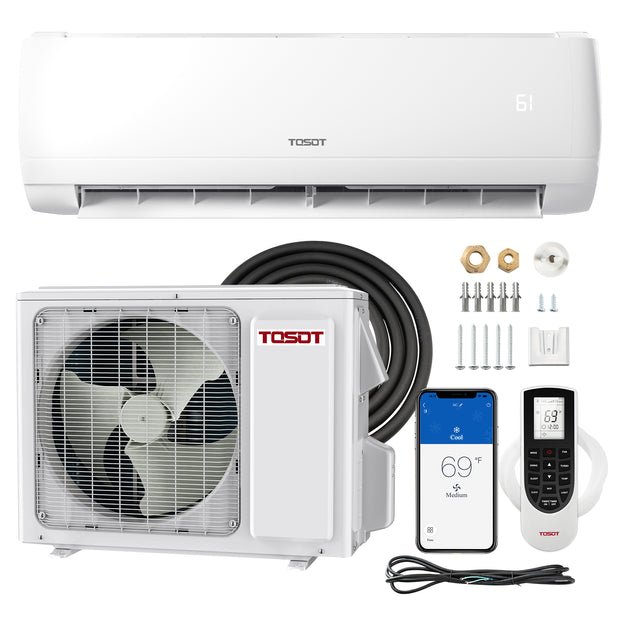
This image is property of tosotdirect.com.
III. Selecting the Right 120v Mini Split AC Unit
A. Assessing Cooling Capacity
When selecting a 120v mini split AC unit, it is crucial to consider the cooling capacity required for the intended space. This is measured in British Thermal Units (BTUs) and is determined by factors such as room size, insulation, and sun exposure. Choosing the correct cooling capacity ensures optimal performance and energy efficiency.
B. Considering Energy Efficiency
Energy efficiency is an important factor to consider when choosing a 120v mini split AC unit. Look for units with a high Seasonal Energy Efficiency Ratio (SEER) rating, as this indicates greater energy efficiency. Energy Star certified units are also recommended as they meet strict energy efficiency guidelines, resulting in potential cost savings over time.
C. Evaluating Noise Levels
Noise levels can significantly impact comfort, especially in bedrooms, offices, or quiet spaces. When selecting a mini split AC unit, consider the decibel (dB) rating of each unit. Look for models with low noise levels to ensure a peaceful and undisturbed environment.
D. Determining Installation Requirements
Installation requirements vary depending on factors such as the location of the indoor and outdoor units, the length of refrigerant lines, and the electrical wiring. Consulting with a professional HVAC technician is recommended to ensure proper installation and avoid any potential issues.
IV. Installation Process for 120v Mini Split AC Units
A. Pre-Installation Preparation
Before starting the installation process, it is important to gather all the necessary tools and materials. This may include a drill, mounting brackets, refrigerant lines, electrical wiring, and a vacuum pump. It is also crucial to carefully read and follow the manufacturer’s installation instructions.
B. Mounting the Indoor Unit
The indoor unit is typically mounted on a wall or ceiling, using a mounting bracket. It is important to ensure that the unit is securely fastened and level. The position of the unit should also be chosen strategically to provide optimum airflow and coverage.
C. Installing the Outdoor Unit
The outdoor unit should be installed on a stable and level surface, such as a concrete pad or metal stand. It should be placed in a well-ventilated area, away from potential obstructions or sources of heat. The unit should also be properly grounded and protected from the elements.
D. Connecting and Testing the Refrigerant Lines
The refrigerant lines should be carefully connected between the indoor and outdoor units, following the manufacturer’s instructions. Once the connections are secure, a vacuum pump is used to remove any air and moisture from the lines. The refrigerant levels are then checked and adjusted as necessary.
E. Wiring the Electrical Connections
Proper electrical wiring is crucial for the safe and efficient operation of the mini split AC unit. The installation manual should provide specific instructions for wiring the unit. It is highly recommended to hire a licensed electrician for this task to ensure compliance with local building codes and regulations.
F. Flushing the System
Flushing the system involves purging any contaminants from the refrigerant lines. This step helps ensure optimal performance and prevents any potential issues. A specialized flushing agent is used, following the manufacturer’s instructions.
G. Final Steps and Testing
After completing the installation process, a final check of all connections, fasteners, and electrical wiring is essential. The system should be tested to ensure proper operation, including checking the airflow, temperature control, and overall cooling performance.
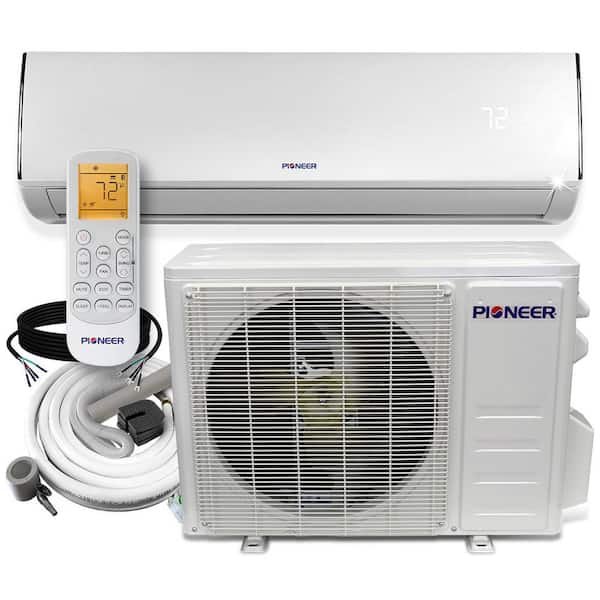
This image is property of images.thdstatic.com.
V. Maintenance and Care for 120v Mini Split AC Units
A. Cleaning the Indoor and Outdoor Units
Regular cleaning of the indoor and outdoor units is important to maintain optimal performance. Dust, dirt, and debris can accumulate on the unit’s surfaces and affect airflow and cooling efficiency. Gently wiping down the units with a damp cloth and removing any obstructions or debris can help keep them clean.
B. Replacing Air Filters
Air filters play a crucial role in maintaining clean and healthy indoor air quality. It is recommended to check and clean the filters regularly, and replace them as needed. Clogged or dirty filters can restrict airflow and reduce cooling performance.
C. Inspecting and Cleaning the Condenser Coils
The condenser coils, located on the outdoor unit, should be inspected and cleaned periodically. Over time, dirt and debris can accumulate on these coils, reducing the unit’s cooling efficiency. Using a soft brush or a coil cleaning spray can help remove any buildup.
D. Checking and Replenishing Refrigerant
Periodic checks of the refrigerant levels are important to ensure optimal cooling performance. If the refrigerant levels are low, it may indicate a leak, which should be addressed by a professional technician. Only certified technicians are qualified to handle and replenish refrigerant.
E. Troubleshooting Common Issues
While mini split AC units are generally reliable, occasional issues may arise. Common issues include sensor malfunctions, sensor alignment problems, or electronic glitches. Consulting the manufacturer’s troubleshooting guide or contacting a professional technician can help identify and resolve these issues efficiently.
VI. Energy Efficiency and Cost Savings with 120v Mini Split AC Units
A. High Energy Efficiency Ratings
One of the key advantages of 120v mini split AC units is their high energy efficiency. With SEER ratings ranging from 16 to 23, these units are designed to provide efficient cooling while minimizing energy consumption. This can result in significant cost savings on energy bills over time.
B. Zone Cooling and Cost Savings
By allowing for individual room or zone cooling, 120v mini split AC units offer a more targeted approach to cooling compared to central AC systems. This allows occupants to adjust the temperature according to their specific needs, potentially reducing energy waste and lowering cooling costs.
C. Potential Rebates and Tax Credits
In some regions, there may be potential rebates or tax credits available for the installation of energy-efficient mini split AC units. These incentives can further offset the initial investment and contribute to long-term cost savings. It is recommended to check with local authorities or energy efficiency programs for any available incentives.
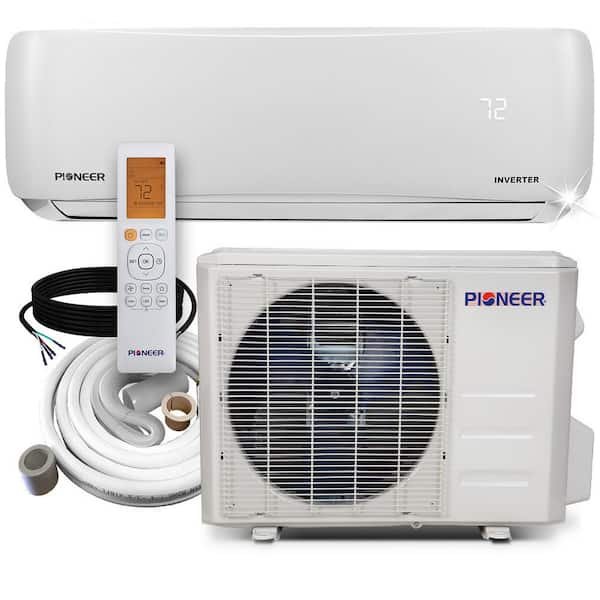
This image is property of images.thdstatic.com.
VII. Common Misconceptions and FAQs about 120v Mini Split AC Units
A. Do Mini Split AC Units Require Ductwork?
No, mini split AC units do not require ductwork. They offer a ductless cooling solution, making them ideal for homes or buildings without existing duct systems. The indoor unit blows cooled air directly into the room, eliminating the need for duct installation or modification.
B. Can Multiple Indoor Units Be Connected to One Outdoor Unit?
Yes, multiple indoor units can typically be connected to one outdoor unit. This allows for zoned cooling, where each indoor unit can be individually controlled and set to different temperatures. This flexibility is especially beneficial in spaces with varying cooling needs.
C. Are 120v Mini Split AC Units Suitable for Every Room?
While 120v mini split AC units are versatile, they may not be suitable for every room. It is important to assess the cooling requirements and factors such as room size, insulation, and sun exposure. In some cases, a different cooling solution, such as a portable AC unit, may be more suitable for smaller spaces.
D. What is the Average Lifespan of a 120v Mini Split AC Unit?
With proper installation and regular maintenance, a well-maintained 120v mini split AC unit can last between 10 to 20 years. However, it is important to note that the lifespan can vary depending on factors such as usage, environmental conditions, and the quality of the unit.
E. Can I Install a 120v Mini Split AC Unit Myself?
While some experienced individuals may be able to handle the installation process themselves, it is generally recommended to hire a professional HVAC technician. Proper installation ensures optimal performance and safety, and it may be required to meet warranty and insurance requirements.
VIII. Comparison to Other AC Systems
A. Central Air Conditioning
Compared to central air conditioning systems, 120v mini split AC units offer several advantages. They provide zoned cooling, allowing for individual temperature control in different rooms or zones. They also eliminate the need for ductwork, making installation more flexible and less invasive. Additionally, mini split AC units tend to be more energy-efficient, as they only cool specific areas when needed.
B. Window Air Conditioners
Unlike window air conditioners, 120v mini split AC units offer greater flexibility in terms of installation and room design. They do not obstruct windows and can be mounted on walls or ceilings, providing a more aesthetically pleasing and unobtrusive cooling solution. Mini split units also tend to be quieter and offer more efficient cooling.
C. Portable Air Conditioners
Compared to portable air conditioners, 120v mini split AC units offer superior cooling performance and energy efficiency. They are designed for permanent installation and provide better temperature control in specific rooms or zones. Portable AC units, on the other hand, are more versatile in terms of mobility and can be easily moved from room to room.
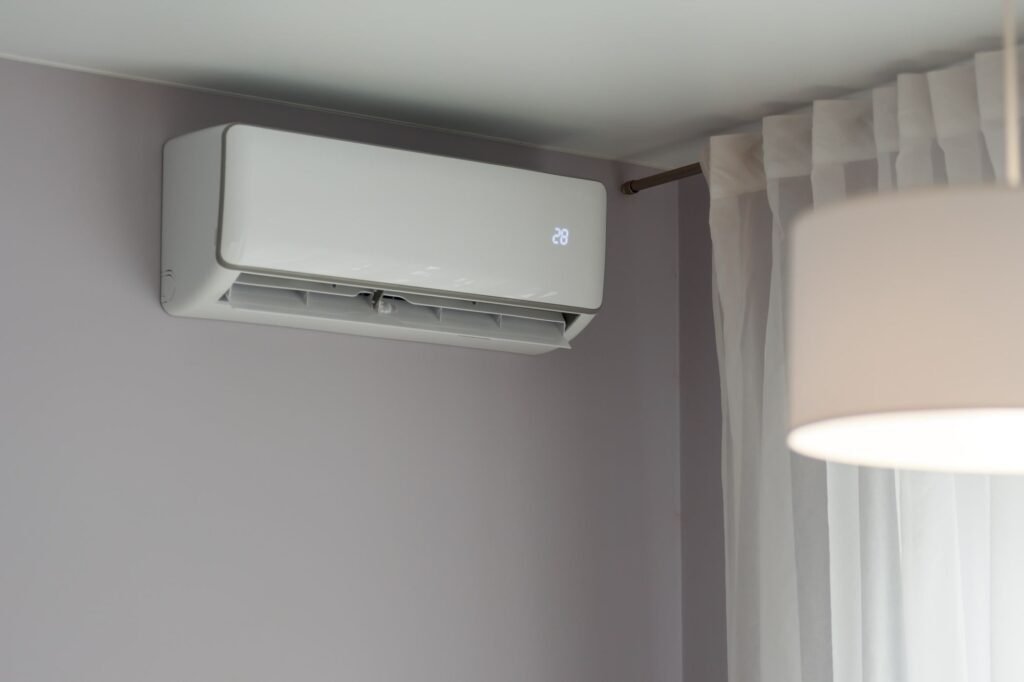
This image is property of simpleshowing.ghost.io.
IX. Reviews and Recommendations for 120v Mini Split AC Units
A. Top Brands and Models
Some top brands offering 120v mini split AC units include Mitsubishi Electric, Daikin, LG, Fujitsu, and Panasonic. It is essential to research and compare different models to find the unit that best fits your specific cooling requirements and budget. Reading customer reviews and seeking recommendations from professionals can also provide valuable insights.
B. Customer Feedback and Ratings
Customer feedback and ratings play a crucial role in evaluating the performance and reliability of 120v mini split AC units. They can help identify any common issues or concerns and highlight the strengths of different models. It is recommended to read customer reviews and ratings on reputable websites or consult with HVAC professionals for their expert opinions.
X. Conclusion
120v mini split AC units are an efficient and versatile cooling solution that offers personalized comfort while providing energy savings. Understanding the technology behind these units, considering key factors in the selection process, and following proper installation and maintenance procedures can help ensure optimal cooling performance and longevity. By harnessing the benefits of 120v mini split AC units, you can enjoy a comfortable indoor environment year-round, while also reducing energy consumption and saving on cooling costs.
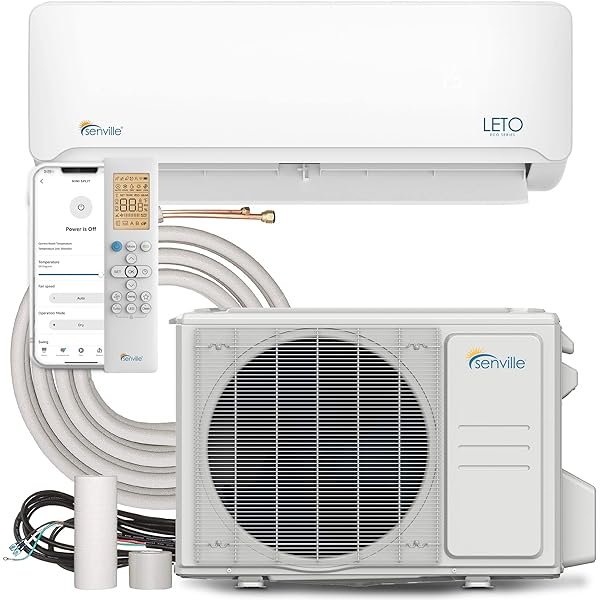
This image is property of Amazon.com.

